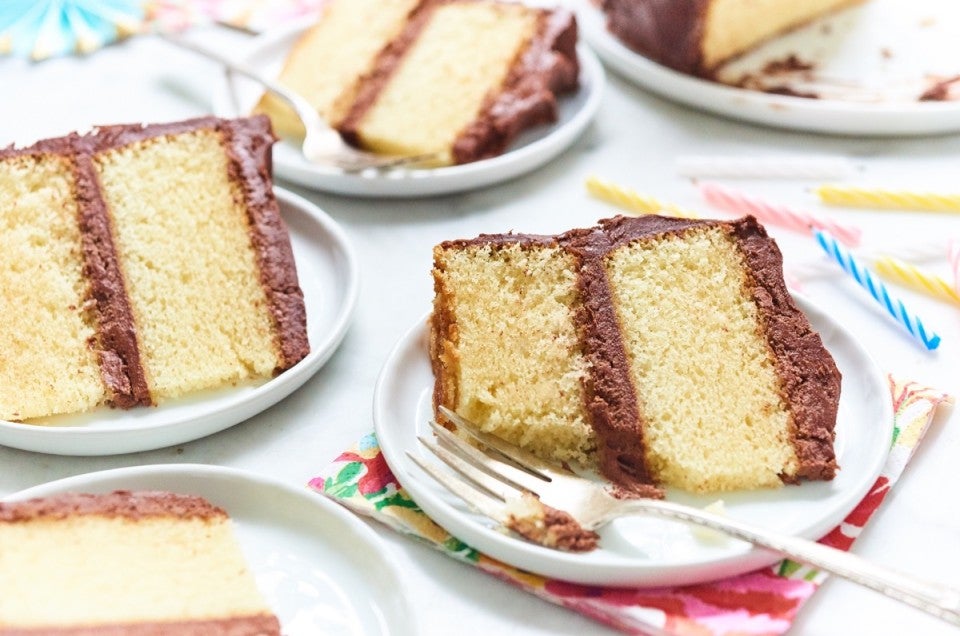


Love sourdough, but looking for a bit more flexibility and ease when you bake with a starter? In The Casual Sourdough Baker, PJ shows you just how wonderfully stress-free sourdough baking can be, from simple but richly flavored loaves to countless easy ways to use your discard. If you're just beginning your journey, our Sourdough Baking Guide lays out the basics you need for success — whether you decide to become serious or go casual!
* * *
You HATE throwing away excess sourdough starter when you feed it. You LOVE cake.
The solution? Sourdough … cake.
The words kinda land with a thud, don’t they? I mean, crusty, lusty sourdough bread, of course. Crispy sourdough crackers, sure. Flavor-packed sourdough waffles, you bet.
But tender, melt-in-your-mouth sourdough cake? Oxymoronish for sure.
That used to be what I thought, back before I learned that sourdough starter can be used in baked goods you’d never think to consider, like apple pie. And blueberry muffins. And yes, cake.
Certainly not to make your cake taste sour! And since we’re using unfed (discard) starter, not to help your cake rise. But there are very good reasons to add discard starter to cake batter:
Sourdough discard helps make cake tender rather than chewy. It inhibits gluten development, both because the gluten in the starter itself has already been weakened during fermentation, and the starter increases the overall acidity of the cake batter — which also serves to tenderize its gluten. The result? Cake with a more delicate crumb.
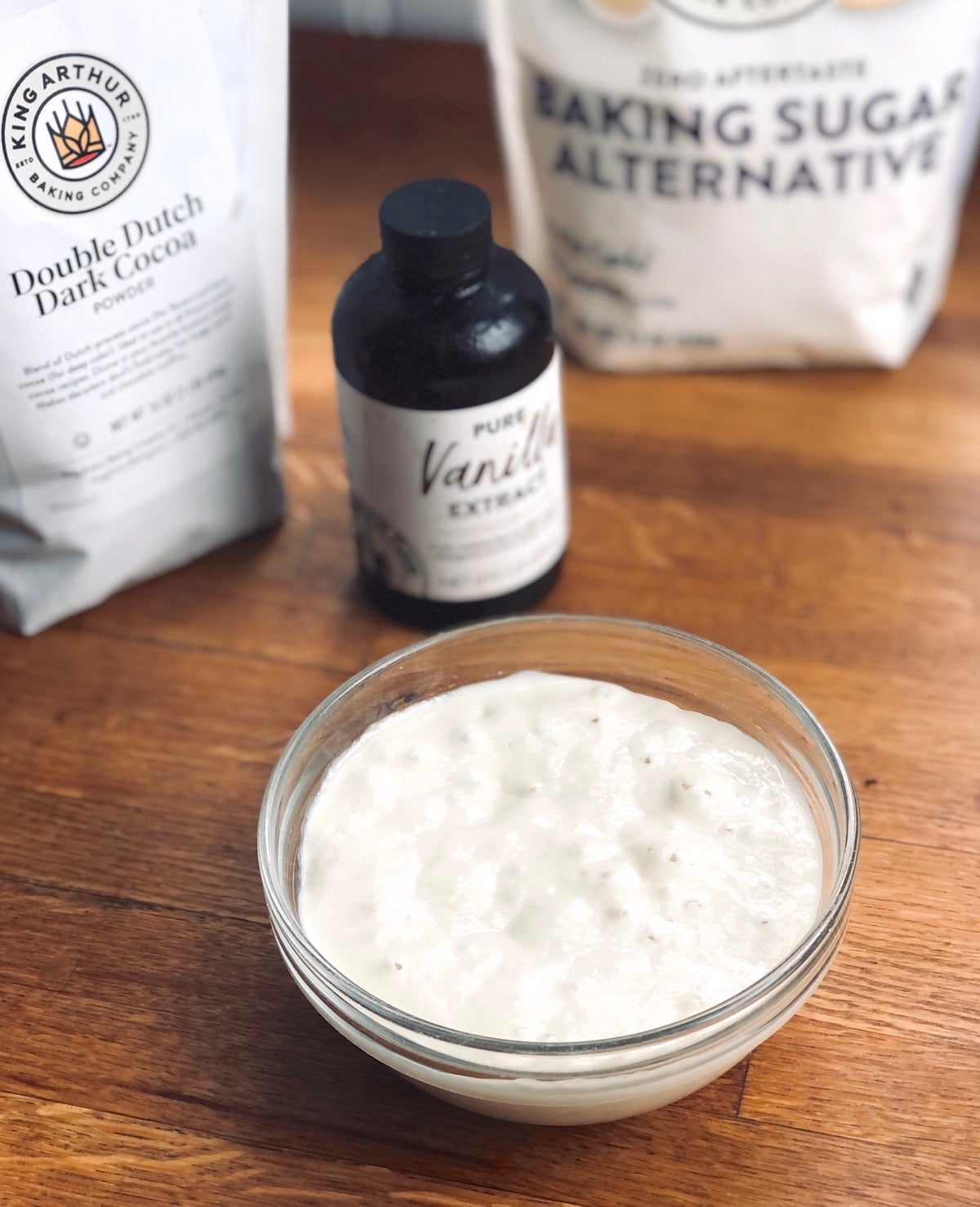
Sourdough discard enhances the flavor of the ingredients around it. Adding a judicious amount of discard starter to your favorite cake brings it to life, brightening its flavors without adding any sour taste. Also, discard starter usually includes some alcohol from fermentation, and alcohol is a flavor enhancer. (Think stirring Burgundy wine into a simmering stew or splashing vodka into your pasta sauce; same deal.)
Sourdough discard’s acidity extends the shelf life of baked goods, keeping your cakes (and muffins and quick breads) softer longer.
Want one more reason? The irksomeness of throwing away starter. If you’re like me and try to avoid food waste at all costs, you feel really uneasy having to discard some of your starter as part of its feed. So — don’t. Bake a cake instead!
Convinced? Here’s a thought: Use cake as a reminder to tend to your starter. Been awhile since you fed it? Grab your favorite cake recipe, feed your starter, and blend that potential discard right into the cake batter.
Happy, fed starter and a fresh-baked cake? Win-win!
We do offer a few ready-to-go sourdough cake recipes on our website (carrot cake, chocolate cake, and cinnamon crumb cake). But what we’re going to learn now is how to add discard starter to your own favorite cake recipes.
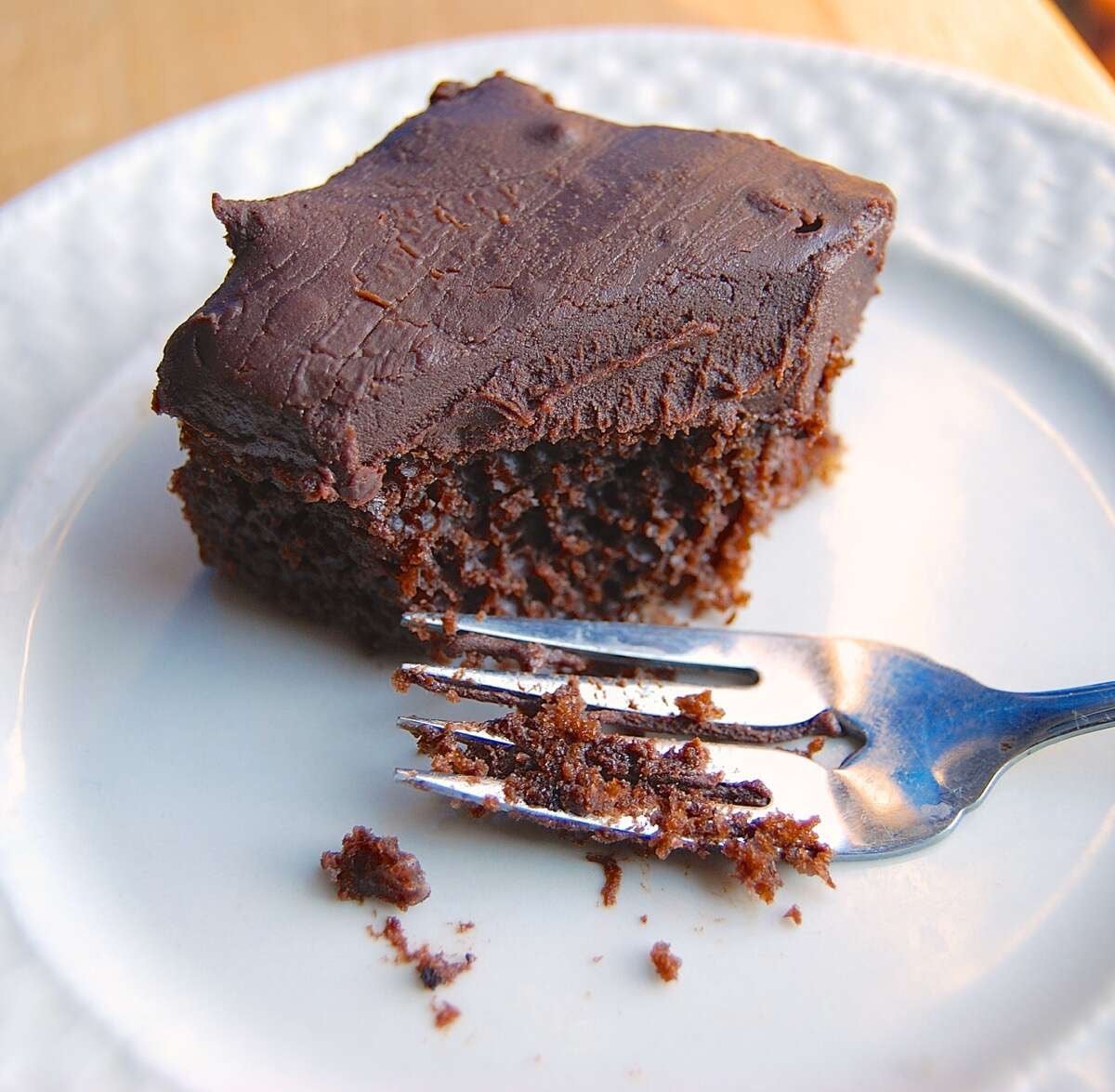
First, absorb this simple fact, because it’s going to be the basis of everything you need to know going forward:
To add discard starter to your cake recipe, reduce the weights of flour and liquid in the recipe by the same weights of flour and liquid in the starter you’re adding. E.g., if you add 120g discard starter to your recipe, reduce the recipe’s flour and water by 60g each.
OK, the fine print: The starter I’m talking about here is a 100% hydration starter, fed with equal parts flour and water by weight. Many if not most sourdough bakers maintain a 100% hydration starter. If yours is considerably more liquid or quite a bit stiffer, you’ll first have to ascertain its percentages of flour and water before you try substituting it for some of the flour and liquid in your cake recipe.
Also, between feedings your starter generates alcohol as part of its ongoing fermentation. That means that little by little, your starter will tip toward more liquid, less flour. But don’t worry; this transition is slight and you won’t have to take it into account when substituting starter for some of the flour and liquid in your cake recipe.
The short answer is, enough to enhance the cake’s flavor and texture; but not so much that the cake tastes sour, rises poorly, or that the acidity of the starter affects the leavening (baking powder or baking soda) you use.
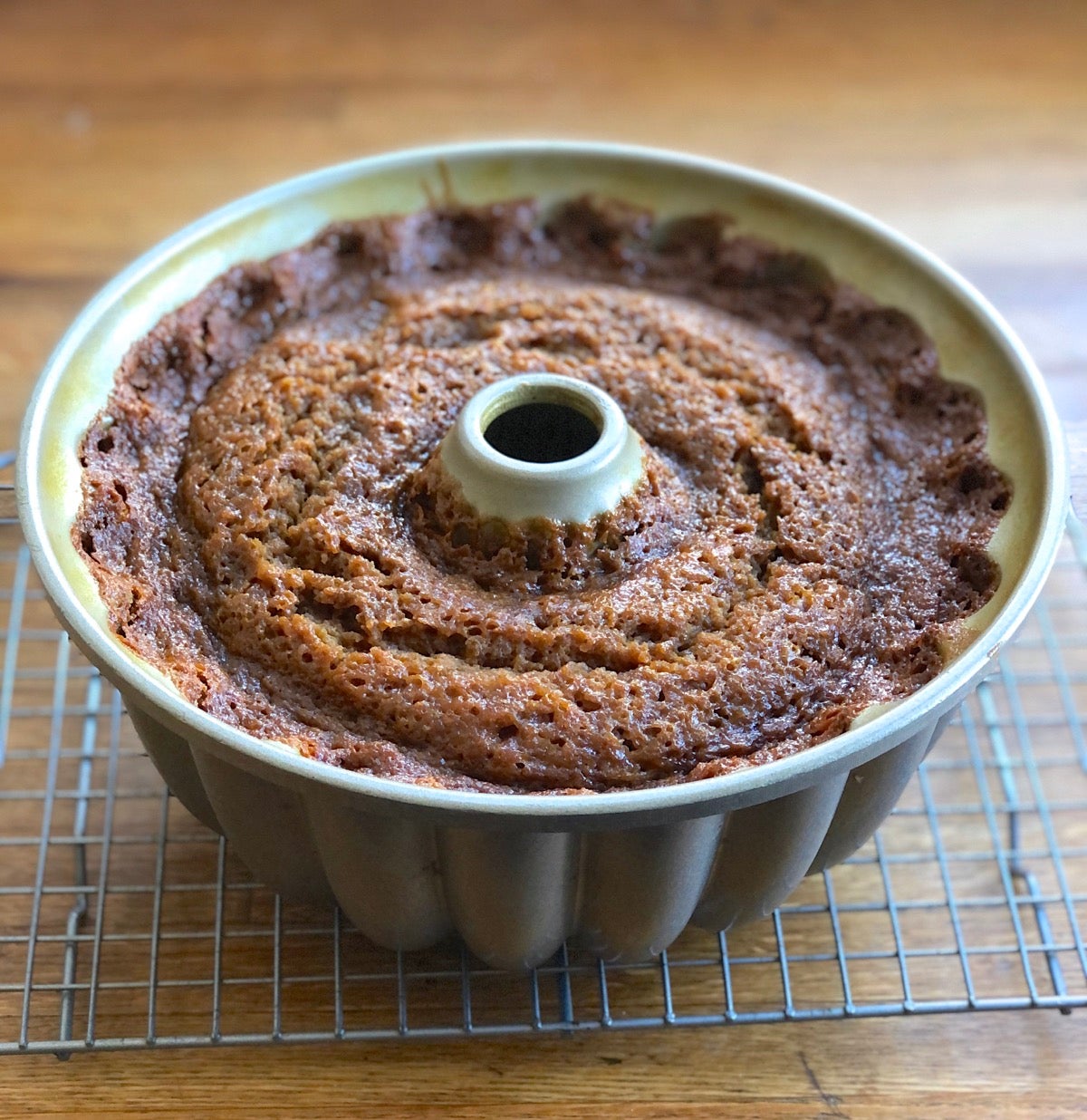
It’s all about the balance between the “fresh” flour you sprinkle into the mixing bowl from your flour canister, which will produce good, strong gluten; and the flour already in your discard starter, whose gluten has been acidified and weakened. The perfect balance is some fresh flour to ensure a good rise and some discard flour to add tenderness.
I generally start by replacing no more than one-third of the existing flour in the recipe with the flour in my discard. If I like the result, I’ll go up to half next time — though at this level, you may start to see a slight reduction in rise.
It’s not exactly a dry ingredient, but it’s not totally liquid, either. At what point in your recipe prep do you add the starter?
The safest bet is simply to follow the recipe’s directions for mixing the batter (using your reduced amount of flour and liquid, of course), then stirring in the discard starter at the very end. One exception: a “dump everything into the bowl and stir together” recipe, in which case it doesn’t matter when you add the starter.
Yes. If your cake recipe doesn’t call for milk, buttermilk, water, brewed coffee, juice, or another liquid, it’s not a good choice for adding discard starter. Note: Melted butter, vegetable oil, liquid sweeteners, and eggs (yolks, whites, or both) don’t count as liquids, since their contribution to the cake goes far beyond their water. For example, don't try adding discard starter to your sponge cake, genoise, or angel food cake batter; its delicate egg-based structure will suffer.
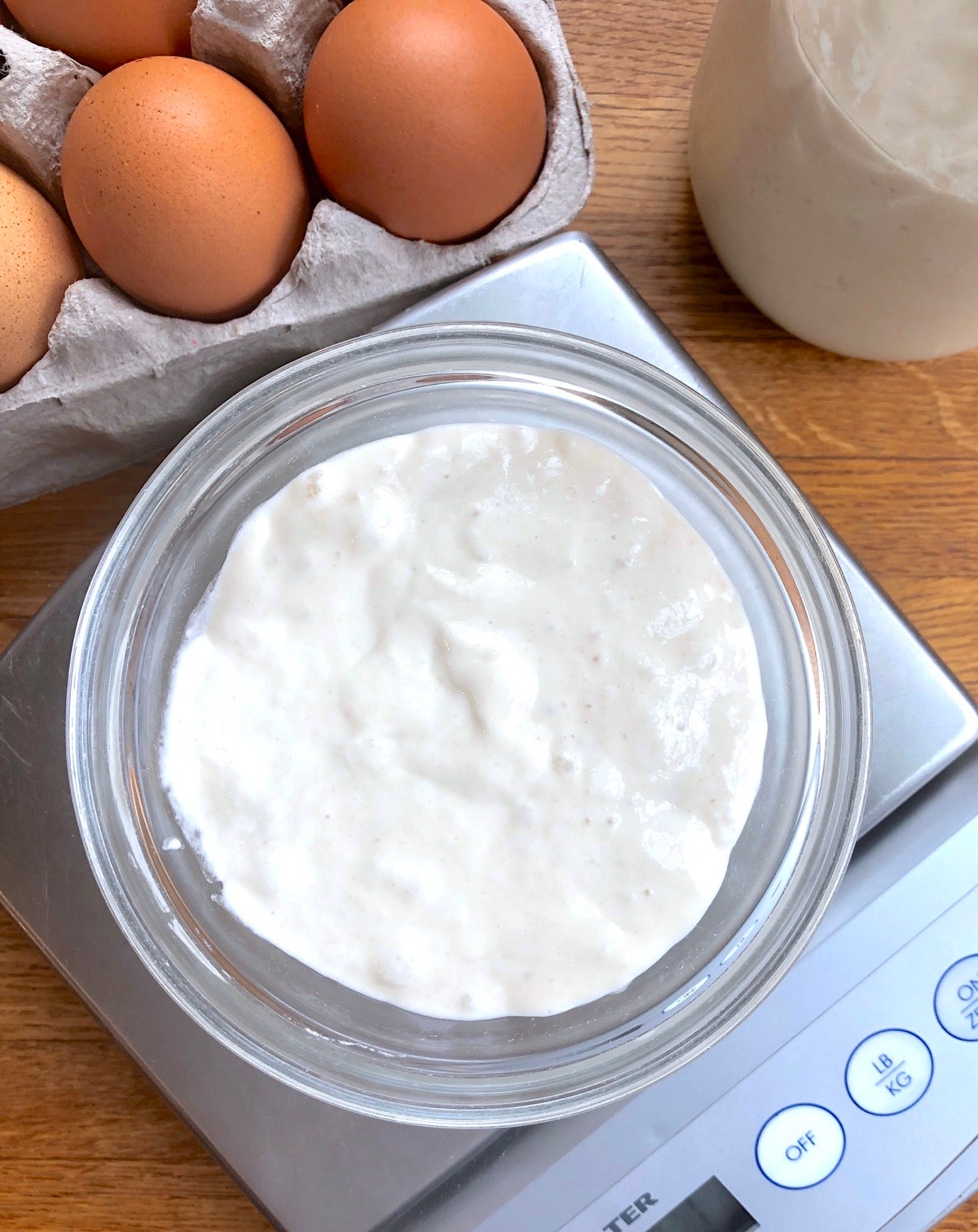
Before we start: Don’t get too caught up in the arithmetic here! I’m going to be rounding off ingredient weights in some cases, and you can, too. A few extra grams flour or liquid here or there isn’t going to make or break your cake.
Let’s put this into action, shall we? I've chosen two cakes to "sourdough-ize:"
Classic Birthday Cake is made using the hot milk cake method, a variation on the creaming method. Sugar and eggs are beaten until light and fluffy, then the flour and other dry ingredients are gently stirred in. Milk, butter, and oil are heated on the stovetop and added to the batter at the very end, resulting in a moist, high-rising, fork-tender cake with delicate vanilla flavor and notes of butter.
King Arthur's Original Cake Pan Cake represents the other end of the spectrum. A typical "one-bowl" cake, the ingredients are all stirred together at once, in any order you choose. The resulting moist, deep-dark cake has a medium grain and assertive flavor, with dark chocolate's minor notes of both tang and bitterness.
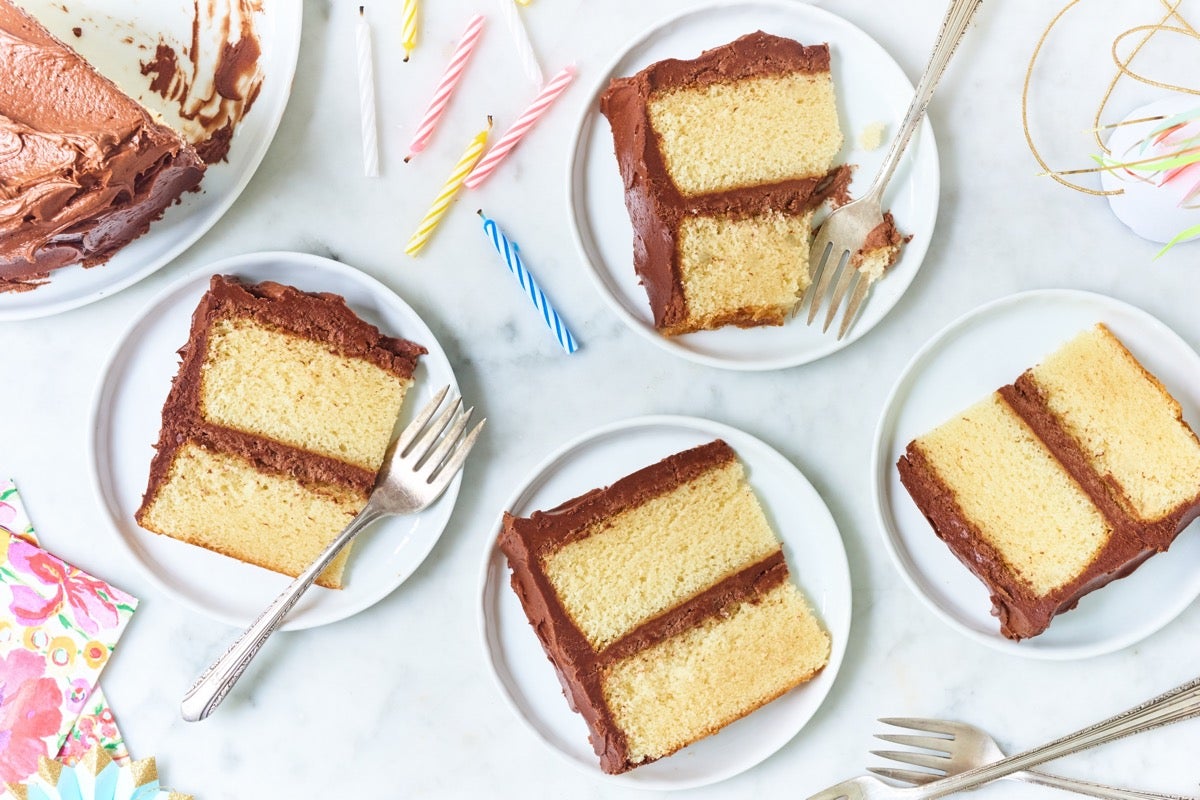
Here’s the original recipe’s amount of flour and liquid (milk, in this case):
We don't want to overwhelm the cake's rather delicate flavor with sourdough, so we'll replace just one-third of its flour (one-third of 240g = 80g) with discard starter (160g, which is 80g flour + 80g water). Here are the new ingredient amounts:
Notice that all I’m doing here is replacing the total weight of the flour and milk in the original recipe (467g) with the same weight of flour, milk, and starter (467g).
Quick tip: When whole milk is the liquid you’re replacing with starter, try adding a teaspoon or so of melted butter or vegetable oil to the batter to make up for the milkfat you’ll be losing.
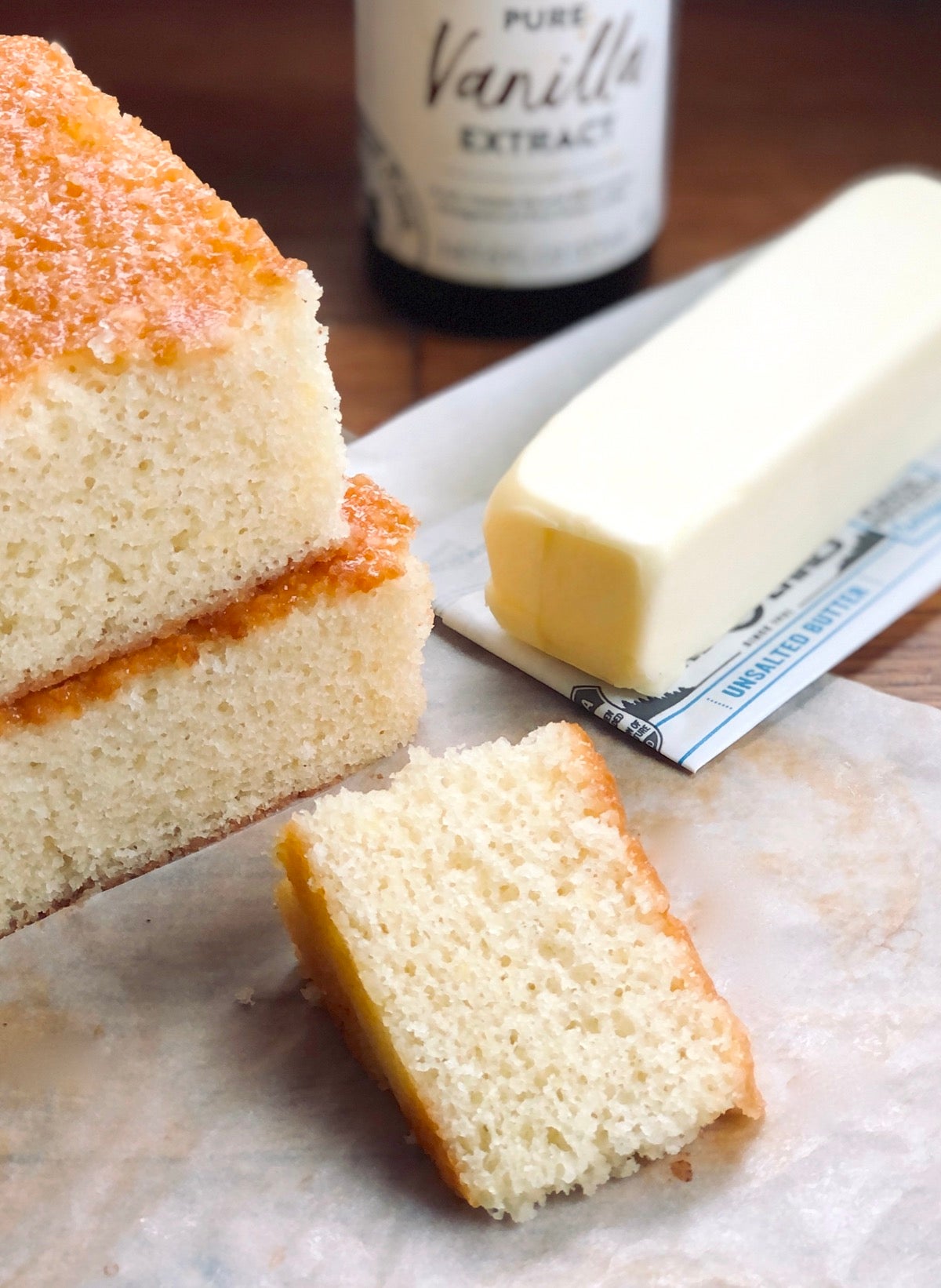
The result: A beautiful cake, high-rising, moist, and tender. Doing a side-by-side comparison with the original, the sourdough-enhanced version exhibits the same crumb and rise. And the flavor? An elusive, mellow tang that serves to heighten its vanilla-ness. It's like you're enjoying a nice slice of vanilla cake and someone snaps their fingers in your face and says, Wake up! "Oh. Yeah. This IS good cake!"
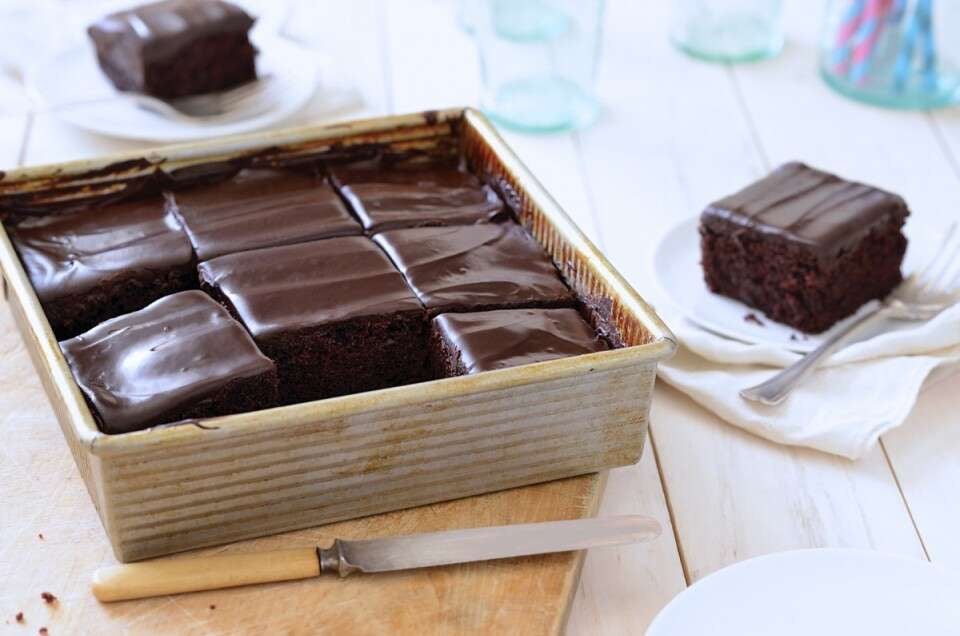
Here’s the original amount of flour and liquid (water, in this case):
This time let’s substitute 50% of the recipe’s flour with the flour in my discard starter. Which means I need to use 180g starter (90g flour and 90g water). Here are the new ingredient amounts:
Again, the total weight of the flour, water, and starter is equal to the total weight of the flour and water in the original recipe.
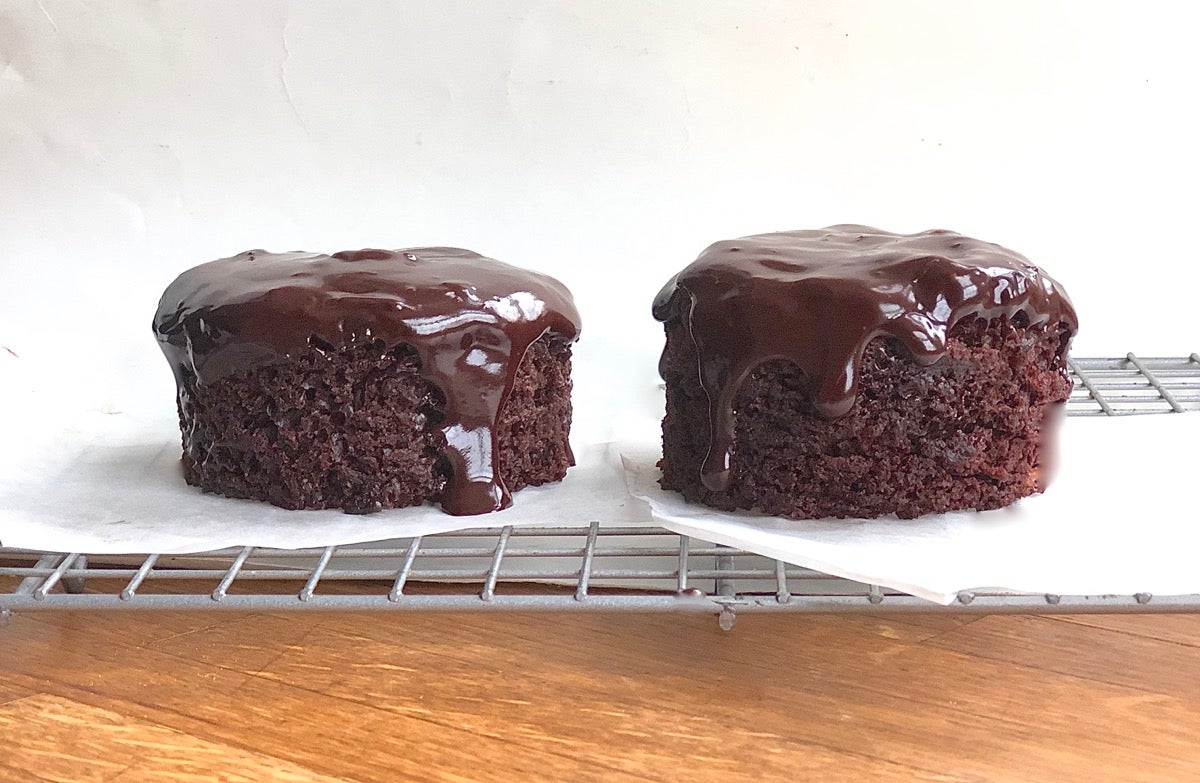
The result: As expected, substituting discard starter for half the flour in the recipe results in a cake that’s fractionally less tall: maybe 1/4” shorter than the original-recipe cake. But the flavor of the cake with starter is also noticeably more vibrant than the original. Again, discard starter provides the wakeup call, reminding you that yes, you LOVE chocolate cake in all its fudgy, nostalgic glory.
See that hungry starter nestled in the back of your fridge? It's time to feed it. But this time, don't discard the discard. Cake is a simple, sensible, satisfying way to use that starter you’d ordinarily trash.
What else can you do with that pesky discard starter? Discover all kinds of "ah-ha!" ways to use (not lose) your discard in our sourdough discard recipe collection.
Cover photo by Liz Neily